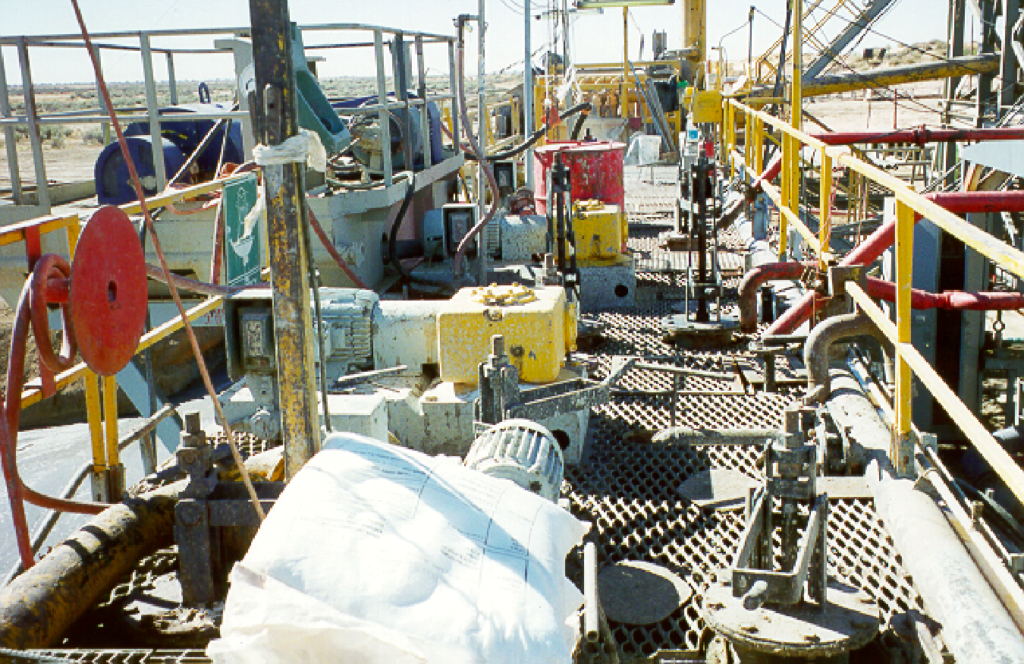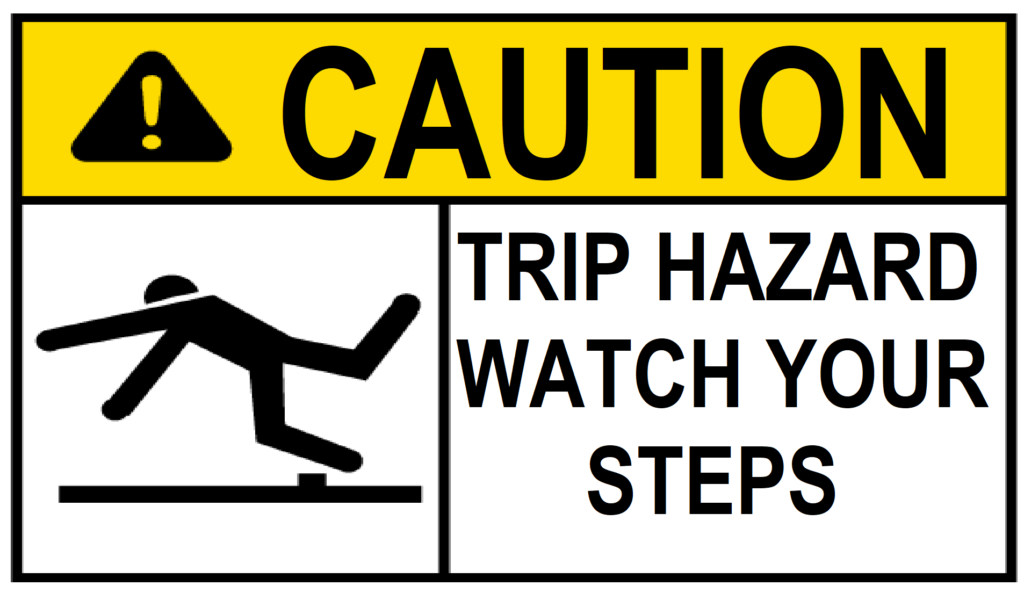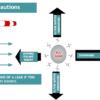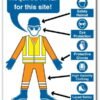Trip hazards
Trips occur when your foot strikes or collides with something, causing you to lose your balance. In most situations, individuals trip over obstacles that aren’t visible, such as uneven flooring edges, messy equipment, tools, or cables.
Accidents from trips are among the most common causes of accidents at work! Trip hazards result in thousands of injuries every year. The most common ones are musculoskeletal, cuts, and bruises but more serious conditions can also occur such as fractures or dislocations
You can’t have a safe and healthy work environment if people aren’t able to move around it freely.
Every day, you are tasked with performing tasks that require the use of your legs. Below I’ve listed common trip hazards and how to assess them so they don’t cause injury or accident.

Common trip hazards
- Cluttered environment and poor housekeeping
- Scattered tools, material, electrical cables & hose in workplace
- Lack of illumination
- Floor surfaces that are uneven or damaged or floor coverings that are unsuitable
- Obstructed view
- Failure to use handrails when climbing on the stairs
Safety Controls for trip hazards:
The incidence of trips in the workplace can be dramatically reduced by implementing policies to regulate behavior. Time pressures on employees who are completing tasks might cause them to rush through work or not pay attention which could lead them into dangerous situations if they do not know what precautions need to be taken when it comes down to hazards like poor housekeeping for example.
Training:
The most common type of walking hazard is the slip or trip. This can be prevented by making sure that employees have been trained on how to avoid these dangers. With the proper education, you can avoid trip hazards and reduce your risk of injury or accident. When workers are given training on trip hazards it can help them be more aware of the risks involved, as well as prevent injuries.
Housekeeping:
Housekeeping is the first step towards preventing trip hazards. Maintaining good house- Keeping includes material & waste management to keep your workplace safe for everyone
- Housekeeping and maintenance should be handled by dedicated workers, if necessary.
- At the workplace, sufficient trash containers in various locations must be provided with a distinct color code system for all trash containers.
- All workplaces must maintain the greatest possible degree of cleanliness in order to ensure a safe working environment and prevent incidents. In addition, Good housekeeping contribute to safe working conditions, while poor housekeeping is one of the most common causes of accidents.
- Before beginning a task, before ending shifts, and after finishing a job, the workplace should be clean. This must be noted and clearly defined on the Work Permit..
- Housekeeping should be given adequate time to ensure that the premises are well maintained.
Material & cable Management:
- Materials must be stacked or kept in a secure way that prevents sliding, falling, or collapse.
- Provide separate storage areas apart from working places
- Hoses, ropes, and electric cables should be arranged & should never be allowed to remain on walkways.
- Providing electrical outlets at worksite will help avoid risk of tripping over wires.
- Place equipment closet and electrical outlets where possible
- Avoid the use of extension cables if possible. Instead, use retractable reel that can be wrapped up when not in use and takes up less space.
- When trailing cables is used temporarily, it is important that they be properly secured. hang power cords over work areas rather than on floor, Use cable ties or hangers.
Illumination:
Poor illumination in the workplace is associated with an increase in accidents. Use proper lighting for walkways, stairs, and ramps to reduce accidents at workplaces where there’s no light source available such as basements or work in the nighttime; keep your space well lit by turns on before entering any dimly-lit rooms so you can see what surrounds you easily without bumping into anything while walking around aimlessly!
Walking Surfaces:
Floor surfaces that are uneven or damaged can present a trip hazard. Floors must be kept clean at all times. Stairways, gangways, passageways, and doorways should all be free of obstructions. Floor coverings with an improper safety measurement could also be dangerous, Damaged surfaces/floors are reported for rectification. Safety precautions should also be taken when covering them. A trip can happen at any time so take extra care!
Stairs / Ladder:
Handrails are important when climbing or descending stairs. Make sure that the Ladder you are using often has been inspected! Damaged rungs also lead directly towards trips. stairs should be kept clean and tidy.
Trip Hazard Sign:
Trip Hazard Sign is a cautionary signal to protect from potential trip hazards. It does not substitute for maintaining personal safety, but instead helps communicate that there are things close by which can cause injury or accident if you weren’t careful enough with what you’re doing!

Responsibilities:
Employer Responsibilities:
Employers have a responsibility to control & manage trip hazards. This includes:
- Visiting workplaces and conducting workplace-specific risk assessments.
- To ensure that obligations are fulfilled, it is important to carry out periodic audits as needed.
- Ensure that employees are adequately trained and instructed.
- That suitable arrangements, are in place to maintain site tidiness to a high standard.
- To monitor daily site conditions and ensure that any remedial actions are implemented through his organization.
Employees responsibilities:
Employees also have responsibilities in relation to controlling the risk from trip hazards including:
- Report anything dangerous, e.g. damaged flooring.
- Keep care of the working environment in which they are working;
- Remove all unnecessary tools and equipment from the work site and return them to the stores.
Regulation about trip hazards:
Workplace health, safety and welfare. Workplace (Health, Safety and Welfare) Regulations 1992



very nice and helpful
very helpful content